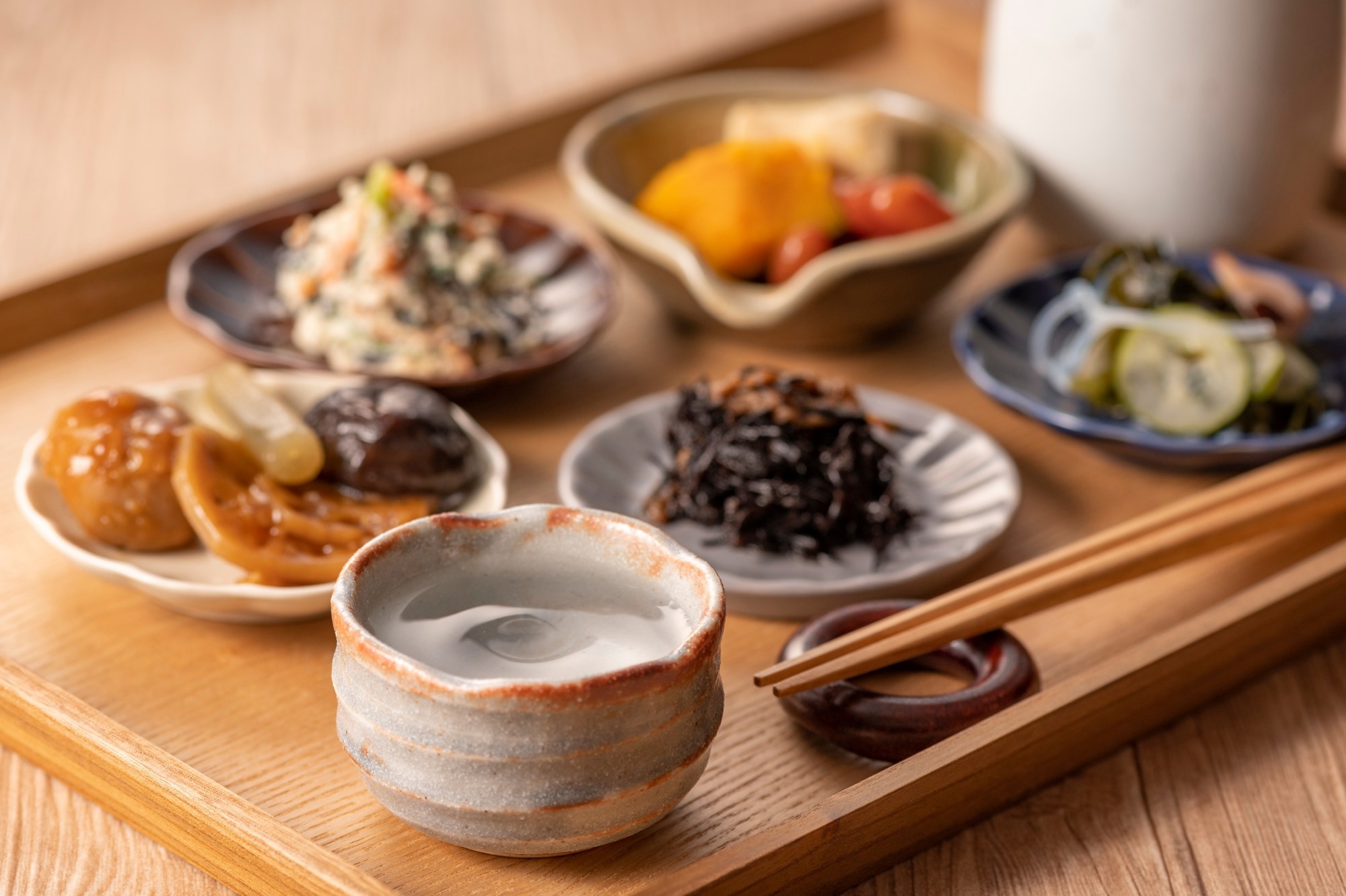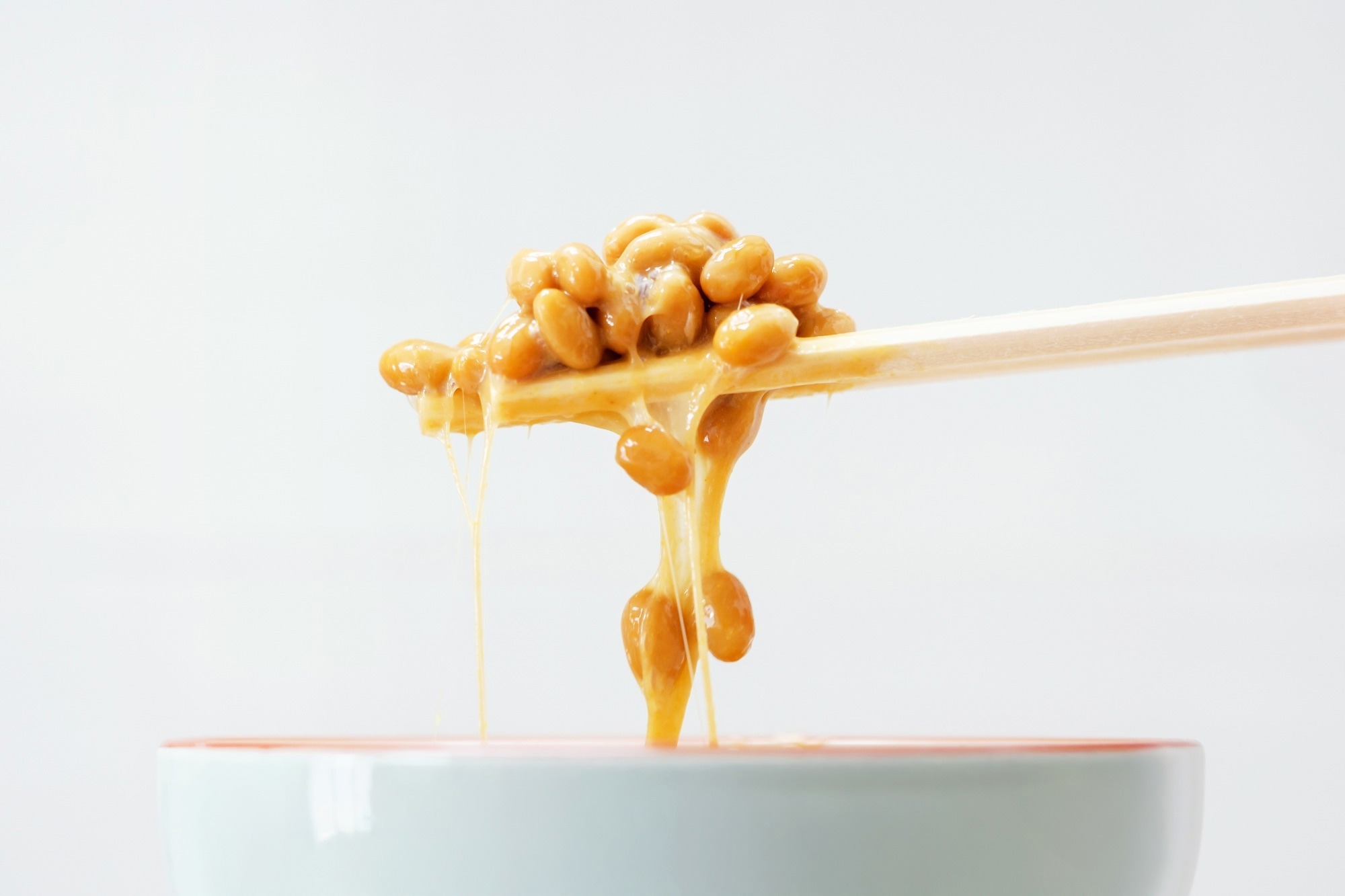Introduction
Core components of washoku
Fermented foods in washoku
High fiber content and gut health
Functional foods and nutritional value
Scientific evidence and health outcomes
Sustainability and global appeal
Challenges and adaptations
Conclusion
References
Further reading
This article explores the traditional Japanese dietary pattern known as washoku, highlighting its cultural roots, nutritional benefits, and sustainable principles. It reviews scientific findings that link washoku to improved gut health, lower cardiovascular risk, and longevity.
 Washoku. Image Credit: Christsumo / Shutterstock.com
Washoku. Image Credit: Christsumo / Shutterstock.com
Fermented foods in washoku
Key fermented ingredients in washoku include miso, a type of fermented soybean paste, natto, which consists of soybeans fermented with the bacterium Bacillus subtilis natto, soy sauce, and tsukemono, which includes various pickled vegetables.4
 Natto beans. Image Credit: TatianaKim / Shutterstock
Natto beans. Image Credit: TatianaKim / Shutterstock
Clinical studies have reported that the regular consumption of natto and miso can increase helpful gut bacteria like Bifidobacterium while reducing the proliferation of potentially harmful bacteria like Enterobacteriaceae. This leads to the increased production of short-chain fatty acids (SCFAs), which further support gut health to reduce inflammation and strengthen the intestinal barrier.6
Unlike its unfermented predecessor, natto is a uniquely rich source of nattokinase, an enzyme with potent fibrinolytic activity. Nattokinase also contains high levels of vitamin K2, a nutrient that regulates calcium deposition to support bone and cardiovascular health.6
The Art of Washoku: The Soul of Japanese Cuisine – The Art of Kaiseki
High fiber content and gut health
The washoku dietary pattern encourages the consumption of vegetables, mushrooms, legumes, and seaweeds, thereby providing a complex mixture of soluble and insoluble fibers. This high fiber intake is strongly associated with improved metabolic health, including better glycemic control and lipid profiles.2, 3
Seaweed, a rarity in most other global diets, contains unique polysaccharides like alginates, fucoidans, and laminarins, which are structurally distinct from terrestrial plant fibers. These compounds serve as prebiotics, thereby further supporting microbial diversity and function in the gastrointestinal tract.7
Frequent seaweed consumption has been associated with a stronger immune system and greater resilience against chronic diseases. This contrasts with many prevalent Western diets, in which fiber intake is lower but also typically derived from a more limited range of cereal-based sources.7
Functional foods and nutritional value
In addition to its holistic macronutrient and fiber profile, washoku promotes the regular and non-sporadic consumption of foods containing potent bioactive compounds. Functional foods like green tea, seaweed, and soy products are integral to washoku and synergize with its macronutrient and fiber components.3,5,8
Japanese green tea is a primary source of catechins, which are polyphenolic compounds with historical anti-inflammatory effects. Matcha tea, a green tea powder processed from shade-grown tea leaves, is also rich in epigallocatechin-3-gallate (EGCG), a catechin with validated cardiovascular health benefits and the potential to reduce the risk of certain cancers.8
All seaweeds are known sources of unique fibers and essential minerals like iodine, which are critical for gut microbiological health and thyroid function. Brown seaweeds like kombu and wakame contain fucoidans, which are sulfated polysaccharides that exhibit anticoagulant, anti-inflammatory, and cardioprotective properties.3
Soy products like tofu, edamame, and miso are rich in isoflavones like genistein, daidzein, and glycitein. These phytoestrogens have been associated with vascular health, including enhanced endothelial function and lower blood pressure. Epidemiological studies conducted in Japanese cohort populations support these effects, as higher soy consumption is associated with a reduced risk of cardiovascular events.5
The health benefits of washoku are likely cumulative, and the interactive effects of these various bioactives consumed together. The extensive dietary matrix within this dietary pattern provides a constant supply of complementary antioxidant and anti-inflammatory biomolecules that protect against the cellular damage that underlies many chronic diseases.
Scientific evidence and health outcomes
Japan consistently ranks among countries with the highest life expectancy, an outcome increasingly attributed to modifiable behaviors, including diet. Previous meta-analyses and systematic reviews have found that higher washoku diet adherence could reduce cardiovascular disease (CVD), stroke, and heart disease (HD) mortality by 17%, 20%, and 19%, respectively.5, 8
Sustainability and global appeal
The principles of washoku are aligned with modern frameworks for sustainable eating, such as that exemplified by the EAT-Lancet Planetary Health Diet. Specifically, both diets recommend a primarily plant-based diet with modest consumption of animal products to ensure both human health and environmental sustainability.9
Washoku emphasizes seasonal, minimally processed, and local produce, which reduces food miles. The low reliance of this dietary pattern on red meat also minimizes greenhouse gas emissions, with its high intake of fish and plant-based proteins offering a more sustainable protein profile than red meat.3
The Japanese concept of ‘mottainai’ encourages the use of all parts of an ingredient, which further contributes to a low-waste food system.2
 Image Credit: Lucegrafiar / Shutterstock.com
Image Credit: Lucegrafiar / Shutterstock.com
Challenges and adaptations
Within Japan, traditional meals are increasingly displaced by Western-style, single-platter convenience foods, particularly among younger generations. This is presumably due to the substantial time and labor investments required for washoku preparation, alongside changing taste preferences and increasing availability of Western fast food.2
Internationally, the unavailability and significant cost of authentic washoku cuisine, as well as a lack of cultural familiarity with preparation techniques, similarly present adoption challenges. Thus, successful global adaptation of washoku will depend on abstracting and integrating its core principles of balance, diversity, seasonality, and umami into more convenient meal formats like ‘washoku-inspired’ grain bowls or simplified one-pot meals.1,2,3
Conclusion
Washoku is a comprehensive cultural and nutritional system whose global relevance is increasingly supported by scientific evidence and aligns with modern health and sustainability frameworks.
The designation of washoku as a UNESCO Intangible Cultural Heritage underscores its value as a social practice that fosters a connection with nature and community.
While challenges to its global adoption remain, the underlying philosophy of washoku provides a flexible and dependable framework for building healthier and more sustainable dietary patterns for future generations.
References
- UNESCO. (2013). Washoku, traditional dietary cultures of the Japanese, notably for the celebration of New Year. Intangible Cultural Heritage.https://ich.unesco.org/en/RL/washoku-traditional-dietary-cultures-of-the-japanese-notably-for-the-celebration-of-new-year-00869. Accessed on 07 August 2025.
- Ministry of Agriculture, Forestry and Fisheries (MAFF). (2015). Washoku. Government of Japan. https://www.maff.go.jp/e/data/publish/attach/pdf/index-20.pdf. Accessed on 07 August 2025.
- Gabriel, A., Ninomiya, K., & Uneyama, H. (2018). The Role of the Japanese Traditional Diet in Healthy and Sustainable Dietary Patterns around the World. Nutrients 10(2); 173. DOI: 10.3390/nu10020173, https://www.mdpi.com/2072-6643/10/2/173
- Miyake, H., Kashino, I., Nanri, A., & Mizoue, T. (2023). Development of the Scores for Traditional and Modified Japanese Diets. Nutrients, 15(14), 3146. DOI: 10.3390/nu15143146, https://www.mdpi.com/2072-6643/15/14/3146
- Tsugane, S. (2020). Why has Japan become the world’s most long-lived country: insights from a food and nutrition perspective. European Journal of Clinical Nutrition, 75(6), 921–928. DOI: 10.1038/s41430-020-0677-5, https://www.nature.com/articles/s41430-020-0677-5
- Chan, E. W. C., Wong, S. K., Kezuka, M., et al. (2021). Natto and miso: an overview on their preparation, bioactive components and health-promoting effects. Food Research 5(3), 446-452. DOI: 10.26656/fr.2017.5(3).587, https://www.myfoodresearch.com/uploads/8/4/8/5/84855864/_52__fr-2020-587_chan_1.pdf
- Kawamura, T., Higuchi, M., Ito, T., et al. (2024). Healthy Japanese dietary pattern is associated with slower biological aging in older men: WASEDA’S health study. Frontiers in Nutrition, 11. DOI: 10.3389/fnut.2024.1373806, https://www.frontiersin.org/journals/nutrition/articles/10.3389/fnut.2024.1373806/full
- Shirota, M., Watanabe, N., Suzuki, M., & Kobori, M. (2022). Japanese-Style Diet and Cardiovascular Disease Mortality: A Systematic Review and Meta-Analysis of Prospective Cohort Studies. Nutrients, 14(10), 2008. DOI: 10.3390/nu14102008, https://www.mdpi.com/2072-6643/14/10/2008
- Nomura, M., Yamaguchi, M., Inada, Y., & Nishi, N. (2023). Current dietary intake of the Japanese population in reference to the planetary health diet-preliminary assessment. Frontiers in Nutrition, 10. DOI: 10.3389/fnut.2023.1116105, https://www.frontiersin.org/journals/nutrition/articles/10.3389/fnut.2023.1116105/full
Further Reading
Last Updated: Aug 18, 2025